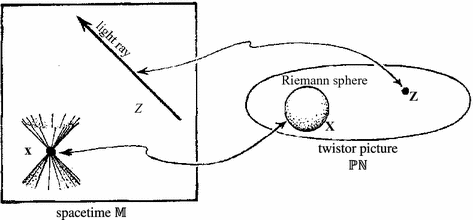Lubos Motl is getting rather concerned (yes, I know about what pops up when I link to his blog…) about recent trends in theoretical physics, especially the implications of recent work (discussed here) of well-known string theorist Erik Verlinde. He claims that many other string theorists share his concern:
The people whose knowledge and opinions about physics are close to mine are finally beginning to realize the worrisome trends affecting the quality and character of the research in theoretical physics. I have a significant number of e-mail exchanges with these folks – and let me assure everyone that you’re not alone.
In many ways I also share Lubos’s concern. Like lots of people, over the years I’ve been deluged with examples of what I’ll call “unconventional physics”, in a spectrum ranging from utter idiocy to serious but flawed work. Much of it shares the all-too-common feature of making grandiose claims for new understanding of fundamental physics, based on vague ideas that often use not much more than a few pieces of high-school level physics and mathematics. The beautiful and deep physical and mathematical ideas that go into the Standard Model are ignored or thrown out the window. In many cases, it’s hard not to suspect that the authors have decided that they can replace modern physics, without bothering to take the trouble to learn what it is. This kind of thing is pretty easy to quickly identify and decide to ignore, and it ends up having no impact on the scientific research community.
In recent years though, some theorists who definitely understand and have made contributions to modern physics have started promoting research which looks depressingly like the typical sad examples of “unconventional physics”. Many of the products of the ongoing multiverse mania fit into this category. Lubos is getting quite worried to see that a very talented and well-known leader of the string theory community, Erik Verlinde, seems to be engaging in this sort of research, and getting positive attention for it. Within a month of its appearance, Verlinde’s “Entropic Force” paper has already generated a dozen or so preprints from other physicists on the same topic. It could easily end up being the most influential (in the sense of heavily referenced) paper of 2010. Seeing this coming from a string theorist he admires is worrying Lubos and his correspondents.
While I agree with Lubos that this is something worth worrying about, his interpretation of the problem is characteristically irrational. In his posting, he argues that this is all due to the influence of the “notorious crackpots” Lee Smolin and Peter Woit. I don’t see how I’m supposed to be responsible for prominent string theorists taking up dubious lines of research I strongly disagree with, other than perhaps having some responsibility for driving them over the edge. In any case, Lubos concentrates his attack on Lee Smolin, arguing that he’s the one mainly responsible for this, an idea which is completely absurd. While Smolin is surely more sympathetic than I am to research like that of Verlinde, he’s a serious scientist and not one with a lot of influence over Verlinde and the string theory community. Lubos’s argument that this is all a left-wing plot organized by the far-left radical hippie Smolin is just laughable. One merciful thing about the string wars always was that positions people took were uncorrelated with their political ideology, keeping politics out of it.
Unlike Lubos though, I’m not convinced that I understand what the source of the problem is. My diagnosis of the current state of the field remains what it was when I wrote my book quite a few years ago: the lack of relevant experimental data coupled with the faddish pursuit of a failed idea about unification has led to a disturbing situation. In a very deep sense though, I just don’t understand why talented physicists react to this by engaging in things like anthropic string landscape research, or vague arguments about “entropic forces”. Lubos is right to notice that this situation has recently become more disturbing. A debate about the causes of this involving people more sober than Lubos would be a good idea. Twenty-some years of string theory hype in the scientific literature and popular press did a lot of damage, and if this gets replaced by hype of ideas even more dubious than string theory unification, things will go from bad to worse. Maybe the LHC will save us, but if this is what it takes, it looks like we’re stuck for a few more years.


